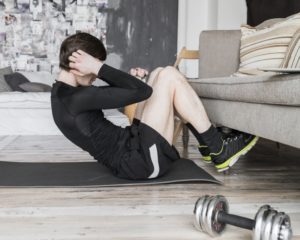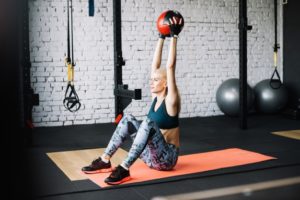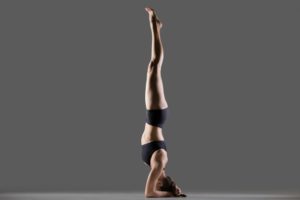Abdominal and Core Strengthening
 Ab and core strengthening will generally help to eliminate lower back pain. It can also help with other injuries such as neck pain, because your lower abs are what provide the proper support for your entire spine.
Ab and core strengthening will generally help to eliminate lower back pain. It can also help with other injuries such as neck pain, because your lower abs are what provide the proper support for your entire spine.
Core strength is something you hear a lot about, but most people don’t know what it actually means or how to perform correct core strengthening exercises. Proper core strength helps to support your spine and help you to maintain correct posture throughout the day.
When referencing the core and abdominal muscles we like to focus on specific areas, like the transverse abdominal muscle, which helps to support the spine. It’s also important to strengthen the muscles on the sides of the hips and the hip rotators. During activities such as walking, this helps to keep your pelvis level and prevent the hips from moving side to side, causing stress on the lower portion of your spine.
The main muscles in your core include:
- Rectus Abdominis (bending up and down)
- Obliques (side to side movement)
- Transverse Abdominis (lumbar support)
Benefits of Abdominal and Core Strengthening
 A strong core also enhances balance and stability. Thus, it can help prevent falls and injuries during sports or other activities. In fact, a strong, flexible core s involved almost everything you do:
A strong core also enhances balance and stability. Thus, it can help prevent falls and injuries during sports or other activities. In fact, a strong, flexible core s involved almost everything you do:
Everyday Acts
Bending to put on shoes or scoop up a package, turning to look behind you, sitting in a chair, or simply standing still, these are just a few of the many mundane actions that rely on your core and that you might not notice until they become difficult or painful.
On-the-Job Tasks
Jobs that involve lifting, twisting, and standing all rely on core muscles. But less obvious tasks, like sitting at your desk for hours, engage your core as well. Phone calls, typing, computer use, and similar work can make back muscles surprisingly stiff and sore.
A Healthy Back
Low back pain may be prevented by exercises that promote well-balanced, resilient core muscles. When back pain strikes, a regimen of core exercises is often prescribed to relieve it.
Sports and Other Activities
Golfing, tennis or other racquet sports, biking, running, swimming, baseball, volleyball, kayaking, rowing and many other athletic activities are powered by a strong core. Less often mentioned are sexual activities, which call for core power and flexibility, too.
Housework and Gardening
Bending, lifting, twisting, carrying, hammering and reaching overhead. Even vacuuming, mopping, and dusting are acts that spring from, or pass through, the core.
Balance and Stability
 Your core stabilizes your body, allowing you to move in any direction, even on the bumpiest terrain, or stand in one spot without losing your balance. Viewed this way, core exercises can lessen your risk of falling.
Your core stabilizes your body, allowing you to move in any direction, even on the bumpiest terrain, or stand in one spot without losing your balance. Viewed this way, core exercises can lessen your risk of falling.
Good posture
Weak core muscles contribute to slouching. Good posture trims your silhouette and projects confidence. More importantly, it lessens wear and tear on the spine and allows you to breathe deeply. Good posture helps you gain full benefits from the effort you put into exercising, too.
Source: Harvard Health
Are you having issues with your spine? Call the clinic closest to your location
or click here to schedule your appointment now. No referral needed!
